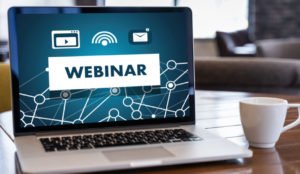Self-employed
Are there any signs that the working time regs will be amended to support the employee and the self-employed and focus on more robust enforcement, rather than guidance?
Karen McDonnell (KM): “From a UK government perspective there has been an update in terms of carrying annual leave for key industries impacted by COVID-19. Sector specific information regards application of guidance is available, for example in the NHS. Within the UK the regulator will, I anticipate, include the guidance when assessing situations where enforcement for this or other potential breaches are under consideration.”
Claire Walsh (CW): “There has been an amendment to the WTR to allow carry over of annual leave. WTR don’t apply to the self-employed. Enforcement is split between HSE and then other bodies for different areas.
Returning to work

A lot has been said about returning to work, but what about the people that have been in work throughout and now being challenged by employees returning?
(KM): “Speaking to RoSPA members and award winners, the potential for a ‘collision between staff and furloughed staff and also shielding staff’ as the safe and healthy return continues has been managed by ensuring that:
- Those staff who have been required to work through COVID feel valued and recognised for their contribution;
- Furloughed staff have had ongoing communication with a focal point in their workplace who has kept them connected and provided consistent messages during furlough. Then as the return to work nears advised them of any changes/modifications to the workplace that will be apparent on their return;
- Staff who have been shielding for personal reasons, or as a consequence of a family members shielding again, need that clear and consistent messaging;
“The challenge is to ensure that where the potential for conflict is identified there is a manager with the necessary competencies to manage this effectively. Depleted mental health is anticipated as the biggest challenge post-COVID and we need to equip our people to manage this.”
(CW): “I think you want to get an understanding of why they feel challenged? Is it because there’s now more people – less space for social distancing? They’ve been “holding the fort” whilst others are furloughed? Using that information, with a combination of engagement and collaboration, will help you allay concerns.”
It has been mentioned about those who remained in work being resentful about ‘carrying the load’ for those who were furloughed. What advice is that for managing this?
(CW): “Back to communication and reassurance. The employee may perceive themselves as being less valuable if they were furloughed – you need to be able to clearly articulate your reasons in a way that lets the employee understand – but be prepared for them not being able to accept this immediately. They may feel concerned that if they weren’t needed during lockdown, are they needed at all – are they going to lose their job? If the discussion highlights a skills gap for example, could you offer the employee upskilling or training?
What would you recommending for supporting staff who have been very busy/part of surge capacity and now being asked to work at home in isolation?
(KM): “So from an OSH perspective, how best to meet the needs of those who now work from home? The answer has to be in re-creating a sense of community. According to Gallup ‘Relationships serve as a buffer in touch times’ the OSH community understands the importance of employee engagement and that the disconnect created by home working has created an imbalance as a result of previously cohesive teams working apart from each other. Re-setting the workforce whether in a traditional pre-COVID sense of as we ‘build back better’ should be underpinned by:
- Open conversations where facts are used to minimise fears, there is an agreed pattern of communication that creates continuity. Reflecting here on continuity errors spotted in some of the world’s greatest movies, the glaringly obvious overlooked, not seeing the wood for the trees;
- Consistent approaches create consistent behaviours and an albeit ‘virtual’ environment within which people can thrive. The lack of consistency allowing people to feel disassociated, creating the potential for depleted mental health;
- Recognising that it is the connections between us that sustain us and underpin the building back better process is the lesson to be learned and shared… whole people with whole lives who still need the ‘small talk‘, blended in with the business case…”
(CW): “Keep in touch with them – make sure that they are included in conversations/meetings etc. Make sure they have had adequate breaks/time off.”
In terms of site access control, do you think temperature checks are beneficial and are you using them on your sites?
(CW): “Fever (elevated core body temperature) is an early sign of COVID-19 in some people, but by no means all. Surface temperature measurement is less reliable than core temperature, but is easier, which is why temperature screening usually involves a measurement of surface temperature. The various methods include handheld measuring devices which may be contact (e.g. aural) or contactless, remote thermal scanning, and newly developed devices with cameras which are apparently able to measure temperate, pulse and respiration rate from a distance. All these methods have deficiencies.
“Temperature screening has been employed at airports and some workplaces. It will miss many of those with early illness, asymptomatic illness, those whose symptoms do not include fever, and in some cases, those who have taken antipyretic medication (such as acetaminophen/paracetamol) to lower their temperature. It has been documented however, that in the early stages of the COVID-19 pandemic, several new cases were detected in airline passengers who underwent routine temperature checks after arriving at their destination.
“Survey research during the COVID-19 outbreak has indicated that airline passengers are reassured by temperature screening undertaken in airports. It could also have an effect of deterring passengers who might otherwise travel when feeling unwell. The same reassurance and deterrence could also apply to the workplace.
“Temperature screening needs to be done with validated equipment, and if done manually, by staff who have appropriate training and personal protective equipment (PPE). Even under these conditions there will be false positive and false negative results.
“Temperature screening is more likely to be useful in populations where COVID-19 prevalence is higher than in low-prevalence groups which is the case in the UK.
“In summary, temperature screening has deficiencies and should be undertaken with appropriate precautions. It may be of some benefit if applied selectively AND along with other measures such as return to work assessments.”
How would you approach a workforce revolt to new policy and procedures?
(CW): “Engagement, engagement, engagement! You have to continually consult, demonstrate you will do what you say you will do, use examples from other organisations, include employees or their representatives in the development of the policies and procedures, instead of dictating to them.
Best practise
What are your core messages for staff driving for work i.e. hygiene at the depot & within the vehicle and cab sharing when delivering?
(KM): “I have been following the development of Waste Industry Guidance over the last few months, it had been reviewed every couple of weeks. Risk Assess to include situational hazards as well as those COVID-related issues. Good hygiene, personal and of vehicles, physical distancing and the use of ‘follow-on’ vehicles to reduce cab sharing and interpersonal contact time. Have also seen similar approaches from delivery companies.”
In my organisation, several “rules” have been put in place linked to wearing of masks, physical distancing, disposal of masks and gloves, only two persons in elevator etc. The Leadership wants to implement the Consequence Management and I am wondering do you have any guidance to share on this?
(CW): “It’s about treating these rules and expectations the same as any other SHE risk. Engage, discuss, treat everyone the same, follow through on actions.”
How do you suggest that HSE Assurance on worksites be carried out? Are there any examples of best practices that have been reported on this?
(CW): “There’s an element of assurance work that can be done by desk study – and by example, we’ve just gone through our 14001 & 50001 external audits remotely. You need to assess the risk against the benefit of being on site and take into account the current HSE advice at the time.”
How do you see the BSI standards in these discussions, such as BSI 22301:2019?
(CW): “Many organisations, particularly those working in or for the public sector (statutory requirement under Civil Contingencies Act 2004), will have had BCMPs in place. Some organisations with a BCMP might have found them lacking, or perhaps they’ve been languishing on a shelf. I would hope that they take the opportunity to review these and update – which should be done as a matter of course. If you consider other relevant standards, like 45001, there is always a requirement for planning for the unexpected!”
How do you communicate information regarding improving sleep, without it being very word-based?
(CW): “Some infographics are great to use in this case. Business in the Community has a fantastic toolkit on sleep and recovery.
Is it still true that males find it harder to talk about how they are feeling and would rather hide things that are upsetting or bothering them?
(CW): “Yes, but that doesn’t mean you shouldn’t try! Building an environment where people can communicate and feel able to do so is important. But equally, accept that some people do not want to talk about how they feel, or what’s bothering them – don’t force them. Just ensure everyone knows that if they need support, it’s there for them.
Looking forward
Do you think that homeworking will become the ‘new normal’?
(CW): “I think there has to be a balance – the element of social connection in the workplace is what sparks creativity and innovation. For many employers, a blended approach might be a good halfway house – but it’s essential to ensure that remote and office-based workers have access to the same information, opportunities, team development etc.
How do you carry out risk assessments for people working from home?
(CW): “Depending on the number of people working from home, you might want to consider an online assessment system that tracks completion and actions for you. Otherwise, HSE and CIPD have good guidance, and again – back to communication. What is stopping the employee from doing the risk assessment?”
What positives do you think have come out of this situation?
(KM): “Time to reflect on how work has been done historically and what you want to ‘keep’ going forward. In my own situation now home based I have a flexibility to manage other responsibilities outside of work given I no longer travel to and from work. I am fortunate however in that I have a cohesive team that have responded well to this ‘new normal’.”
(CW): “I think a lot of employers have had to quickly realise that people can be equally, if not more effective, working remotely. I also hope that they will see their employees more now as people, with lives outside the workplace, life challenges and so on. Reduction in commuting has resulted in lower emissions and fewer accidents.”
Driving continuity in the ‘new normal’ – The unknown
If you missed the original webinar, you can catch up with the full on-demand recording now.
The content:
 Gain best practice sharing insights, from industry leaders to you
Gain best practice sharing insights, from industry leaders to you- Hear an occupational health & safety focus – learn how you can keep mental and physical health a priority
- Learn and take away effective strategies for how you can support yourself, employees and people across your organisation during uncertainty and form a ‘new normal’.
- Learn how you can still strive for excellence and use this time to your advantage – Business Continuity in Uncertainty. Take away a model on using a management system to ensure the business is driving forward
- Q&A – ask questions and get answers – what do you want to know.



 Claire Walsh is a Chartered Member of IOSH and Member of the Institute of Risk & Safety Management and Associate Member of the Association of Occupational Health Practitioners. She has been a Health and Safety Practitioner for over 20 years, working in diverse fields such as heavy and light engineering, local authority, the 3rd sector, and a UK wide organisation delivering investment, construction and maintenance services. Claire is the Head of Occupational Health and Wellbeing for BAE Systems – Naval Ships, with responsibility for developing and implementing a world class health and wellbeing strategy for over 4000 employees in the UK. Claire will shortly be joining the new SHE team in BAE Head Office, covering UK and Rest of World.
Claire Walsh is a Chartered Member of IOSH and Member of the Institute of Risk & Safety Management and Associate Member of the Association of Occupational Health Practitioners. She has been a Health and Safety Practitioner for over 20 years, working in diverse fields such as heavy and light engineering, local authority, the 3rd sector, and a UK wide organisation delivering investment, construction and maintenance services. Claire is the Head of Occupational Health and Wellbeing for BAE Systems – Naval Ships, with responsibility for developing and implementing a world class health and wellbeing strategy for over 4000 employees in the UK. Claire will shortly be joining the new SHE team in BAE Head Office, covering UK and Rest of World. A highly motivated safety advocate, skilled in partnership working, with a track record of working with and through key stakeholders across the global Health and Safety community. As OHS Policy Adviser RoSPA and Head of RoSPA Scotland, Karen has a broad range of strategic and operational experience gained over 30+ years whilst working for RoSPA and volunteering on behalf of IOSH. Each of which seek to reduce the burden of injury associated with accidents and work-related ill-health on the working population towards sustainable working lives here in the UK and the wider world. A Past President of IOSH, Karen presents an exceptional personal brand, and can influence and motivate others to think out with or across traditional boundaries.
A highly motivated safety advocate, skilled in partnership working, with a track record of working with and through key stakeholders across the global Health and Safety community. As OHS Policy Adviser RoSPA and Head of RoSPA Scotland, Karen has a broad range of strategic and operational experience gained over 30+ years whilst working for RoSPA and volunteering on behalf of IOSH. Each of which seek to reduce the burden of injury associated with accidents and work-related ill-health on the working population towards sustainable working lives here in the UK and the wider world. A Past President of IOSH, Karen presents an exceptional personal brand, and can influence and motivate others to think out with or across traditional boundaries. With 17 years’ experience delivering Health, Safety, Risk, Quality and Environmental software across the globe, Jane understands business health & safety. She is emphatic in her approach with a proven track record of understanding challenges, articulating business needs and demonstrating how to drive performance by providing insightful data. Jane challenges customers to progress from their current state by guiding them in process improvement that results in clear value and educates businesses on how to articulate their data for years to come. Jane is Chair of the Scottish Chamber of Safety and a member of the Management Advisory Committee for Safety Groups UK helping support and deliver health & safety strategies throughout the UK.
With 17 years’ experience delivering Health, Safety, Risk, Quality and Environmental software across the globe, Jane understands business health & safety. She is emphatic in her approach with a proven track record of understanding challenges, articulating business needs and demonstrating how to drive performance by providing insightful data. Jane challenges customers to progress from their current state by guiding them in process improvement that results in clear value and educates businesses on how to articulate their data for years to come. Jane is Chair of the Scottish Chamber of Safety and a member of the Management Advisory Committee for Safety Groups UK helping support and deliver health & safety strategies throughout the UK.